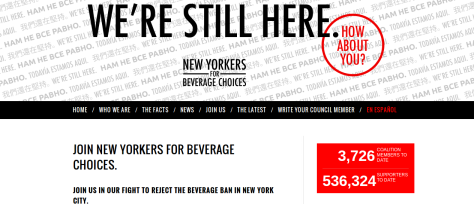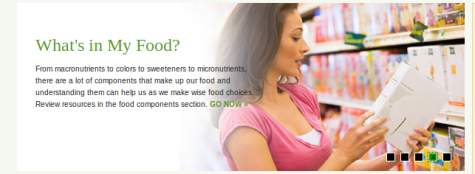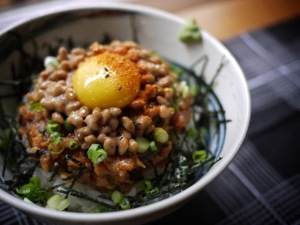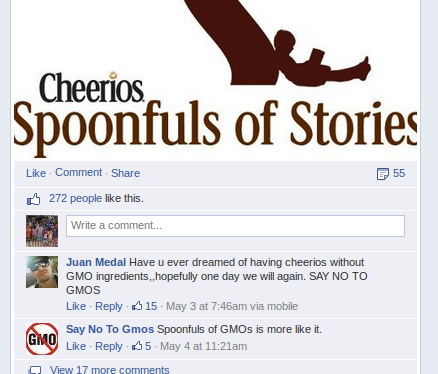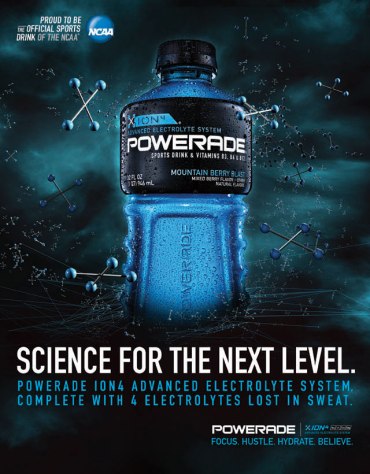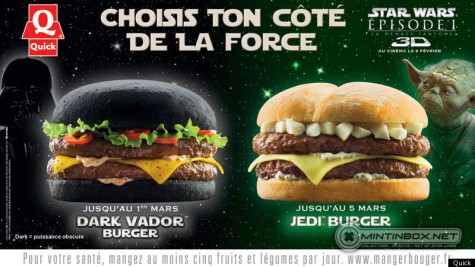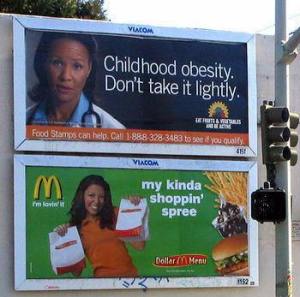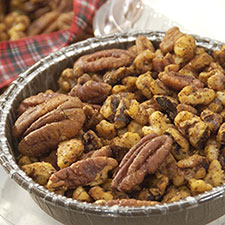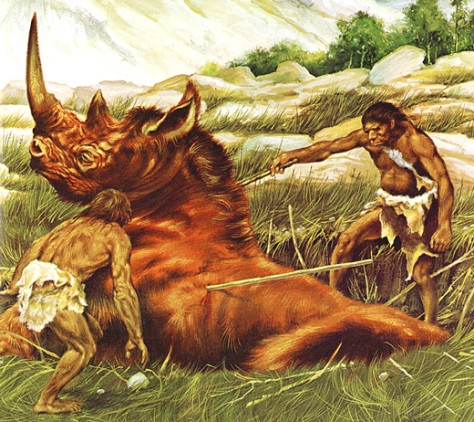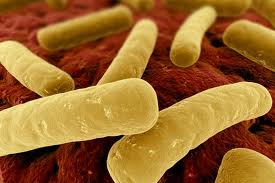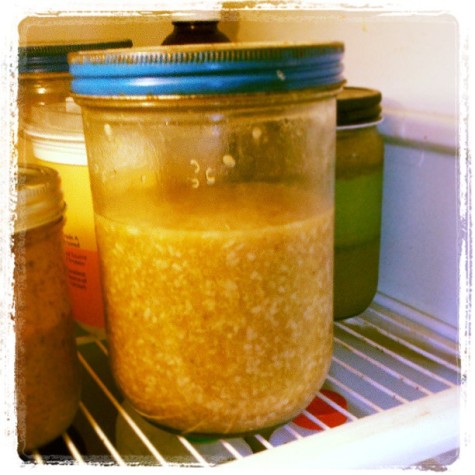Posted: May 27, 2013 Filed under: News | Tags: american diet, apple, farm bill, food industry, gmo Leave a comment
Genetically Modified Beverage Labelling, rejected.
The senate shot down the GMO provision to the new 2013 Farm Bill last thursday. Unlike 49 other countries, congress just doesn’t feel like Americans want to know when the food type item altered at the most fundamental level.
If you are an ‘apple a day’ kind of person this campaign could be your politic apple of the day.
Happy Memorial, Grill something will ya!
5 & Wise Wednesday: Food Industry Front Groups and You
Posted: May 22, 2013 Filed under: News | Tags: american diet, food industry, food news, front groups, mcdonalds, meat consumption, soda tax Leave a commentWith the growing backlash against the unhealthful motives of foodie giants the connections between product advertising, scientific studies, and public relation front groups has become more confusing and grotesque than the Life of Coffee Mate flavors.
Here is a 21st century question for ya, What is a food industry front group? It is a group that appears to benefit the public but in actuality is funded by branded food companies attempting to further an agenda. Some times these groups are long standing, other times they arise out of a quick lobbying need for a specific issue, Such as Mayor Michael Bloomberg’s proposed sweetened beverage cap.
By funnelling money into front groups food industry giants can improve public relations without appearing to have a vested profit driven incentive. Basically, the food industry is not credible and it knows it.
Here are 5 examples everyone should know about:
1) US Farmers and Ranchers Alliance
Mission: “We commit to working together, regardless of type, size or philosophy of our
farms and ranches, to continue improving our food supply.”
Reality: Further mask issues related to food borne illness, monocropping, antibiotic and pesticide usage and other issues related to Big Agriculture
Some http://www.fooddialogues.com/about/alliance-affiliates: DuPont (pesticide manufacturer), John Deere, Monsanto, Cargill
2) New Yorkers for Beverage Choices
Mission: We believe New York City residents and visitors should have the right to buy beverages in any size they choose.
Reality: Protect the image (an therefore profits) of sugar sweetened beverages by invoking personal freedom and diverting attention from public health.
Funding Affiliates: American Beverage Association (Coke, Pepsi, etc.)
3) Center for Consumer Freedom
Mission: “to promoting personal responsibility and protecting consumer choices. We believe that the consumer is King. And Queen.”
Reality: Aimed to attack legislation that threatens the profits and image of the food industry by framing issue as consumer rights threats.
Funding Affiliates: Founded by Phillip-Morris it has had numerous past food industry funders, the current funders are not publicly known
4) International Food Information Council Foundation
Mission: “dedicated to effectively communicating science-based information on health, food safety and nutrition for the public good.”
Reality: To alleviate public fears related to food engineering and pesticide usage by offering biased industry funded studies.
Calming consumer nerves with nuggets like this: “Based on strong scientific evidence and consensus among a broad representation of scientific and governmental bodies, there is no known food safety concern related to consuming food produced through biotechnology.”
Funding Affiliates: Kraft, McDonalds, Nestle, Pepsi Co, Monsanto, and DuPont to name a few
5) Bell Institute of Health and Nutrition
Mission: “The mission of the Bell Institute and its staff of doctorate-and master-level scientists and registered dietitians is to influence the development of quality products that nourish lives and contribute to healthy living.”
Reality: Pay off a bunch of nutritionist to make sugary breakfast cereal look like health food.
“cereal is on of the healthiest breakfast choices you can make.” provided it is straight up bran.
Funding Affiliates: Project of General Mills Cereal
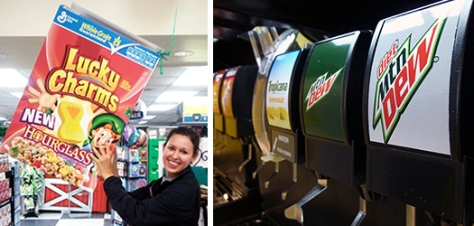
Don’t distrust all science, just take amount to find the funders before going on the Mountain Dew and Lucky Charms diet.
Comprehensive analysis of these and more Front Groups can be found here at the Center for Food Safety
Friday Foodie News Ready Round Up
Posted: May 17, 2013 Filed under: Health, News | Tags: american diet, bacillus subtilis, cheerios, corn, food industry, food news, gmo, natto, probiotic, resistant soybeans, soybean, toxic pesticides Leave a commentHey conscious consumer wannabes (I put myself in this category). The new Buycott app will help instantly sort out which food products fought for/against genetically modified food labels. The app allows you to scan products and tells you if it was made by one of the 36 corporations that donated more than $150,000 to oppose the mandatory labeling of GMOs. It will also tell you other little prosocial perks such as if the company has taken a viewpoint on issues of LGBT rights BTW.
Good timing considering that Monsanto just won a lawsuit against 75-year-old Indiana farmer Vernon Hugh Bowman after he attempted to use its patented soy bean seeds for more than one season. Bowman argued that he did not violate the seed giant’s patent because Monsanto’s Reday Round Up pesticide resistant soybeans are “self replicating.” He ended up settling for $87,000.
Environmental Working Group’s General Counsel Thomas Cluderay had this to say:
“It will no doubt pave the way for greater use and development of genetically engineered seed products and use of toxic pesticides, such as Round-up, on our farm fields. This is yet another reason why we need clear labeling of GE foods so hat consumers can make better choices when buying food for themselves and their families.”
Don’t Swear off soy beans just yet because my order from GEM Cultures just came in and I am about to try some soy fermentation and I would like to share them with you. What am I up to? Natto your business.
Natto is soybeans fermented in ancient tradition (with Bacillus subtilis); a true feudal probiotic power house steeped in goey runny tradition. Its mineral content assists wit blood clotting, clear skin, and perhaps cholesterol. I have never had it and it’s alien gutlike appearance has me very curious about its flavor.
Here is the recipe I am going to use (I promise to use organic soybeans), I’ll let you know how it goes next week.
Go ahead and swear off corn though. No easy task since it is the key ingredient in every processed food from strawberry jam to Steak ‘Ums (I count cows stuffed on corn a giant four legged ears of maize). Here is a chance to help put the wholesome back in one American classic.
Occupy CHEERIOS!
Get behind this petition to take the GMO’s out of Cheerio’s and the new trend of spaming their facebook page with GMO related comments.
If they are going to uses nostalgic ads from when their product was GMO free they should have the integrity to use the same ingredients from the era.
I will end with an ad for junk food that pushes beta-carotene to a new extreme, BABY CARROTs?!
It might be the, Bar… But it is Not Chocolate
Posted: May 15, 2013 Filed under: News, Uncategorized | Tags: acne, cacao, chocolate, diet, food industry, food news, health, skin Leave a commentI have a nutrition class final i really should be studying for right now so this Wednesday’s post is a quicky.
Right from the get go. Chocolate beans, a.k.a Cacao, does not cause ache. But don’t nibble any Nestle just yet.
My sister mentioned how she had been “breaking out” all month long and that she needed to dial back her chocolate consumption (sacrilege?… maybe). I asked what type of chocolate she was eating. A daily dose of Lindt Classic Recipe Milk Chocolate Hazelnut Bar was her indulgence of choice.
Research being done at New York University’s Food Studies department has determined that, “there is increasing evidence of a relationship between diet and acne. The link is stronger in high glycemic load diets and dairy products compared to other dietary components”
Let’s look at the ingredients in this bar candy bar.
Pretty unintimidating by modern mass produced chocolate standards. Still, sugar and dairy come before chocolate, which is then followed by two other forms of dairy (lactose and skim milk) and some soy. These are the ingredients that *MIGHT be causing my sis’s acne.
Check out the ingredients for a Americas favorite candy bar, Snickers
First we see milk chocolate, which ends up being sugar, three separate dairy ingredients, then chocolate) the nougat is mostly comprised of sugar and hydrogenated soy oil. Don’t stress over though because…
*Stress is the variable MOST linked to spikes ache and poor complexion. Many studies have measured spikes in ache during exam season for students.
If you would like some chocolate but want to avoid some of the skin unfriendly ingredients read the label. Try to indulge in a darker percentage with coming in after chocolate less dairy and sugar. If you got a sweet chocolate tooth eat it with a banana companion. Regardless, please please please don’t stress it.
Friday Food News Round Up: Random Tastes of Spring
Posted: May 10, 2013 Filed under: News, Oakland, Uncategorized | Tags: american diet, food, food industry, food news, fructose corn syrup, health, mcdonalds, nutrition, restaurants Leave a commentGood Morning Sunshine! A tasty TGIF to you.
1) Believe in Hydration
I know it is early, but right of the bat we got to talk about Coke again. Here is an interview with Katie Bayne, Coca-Cola’s president of sparkling beverages in North America. Coke has been ramping up the positive PR, championing itself as the cure, not cause, to obesity. Mostly this just means printing catchy infographics for facebooker to Like and tweeters to retweet. Bayne’s answers were so ridiculous I was sure it was a hoax or something cooked up by The Onion.
When asked about those who viewed Coke-Cola beverages as empty calories, Bayne responds:
“A calorie is a calorie. What our drinks offer is hydration. That’s essential to the human body. We offer great taste and benefits whether it’s an uplift or carbohydrates or energy. We don’t believe in empty calories. We believe in hydration.”
This quote is as silly as it is dangerous. The sodium and caffeine content of sodacan cause dehydration. I believe in free and clean hydration, before there was soda there was water
Is coke the cure to Americas ails Marion Nestle put it best:
“The only way Coke can really help address obesity and poor diets is to sell less soda—the one thing its stockholders will not allow. And the company is doing everything it can to fight city and state soda taxes, portion size caps, or anything else that might reduce sales.”
Meanwhile… in France.
2) Royale wit Cheez
Lets set the stage.
Heard of the French Paradox. Considering America’s chronic disease rates, nutrition scientist have always looked at France with envy. Why can the French indulge in wine, cheese, and sweets daily and still maintain a wealth of health? We may never know because French food is fading as fast food is flourishing. Fast food chains now account for 54 percent of all restaurant sales in France.
The number of causal cafés in France has dropped from 200,000 to 32,000 since the end of WWII. A shorting lunch break has demands an “American-style automated experience,” also know as stuffing a meal in 15 minutes while power walking. Cie la vie.
Meanwhile… in Brazil
3) Brazil has Cajones! Sueing the Golden Archs!
The Procon consumer agency in Sao Paulo, Brazil, has fined McDonald’s $1.6 million for targeting children with advertising and toys.
Lawyer, Renan Ferraciolli had this to say. “There’s no need to appeal as they do to children without the maturity or the rationality to enter the market as consumers.”
Agreed, ! hope American lawyer follow suit on this lawsuit.
4) Cabinet full of Random, throw em’ in a pie
On a truly lighter note here is a fun little bit of random. King Author Flour’s website has a Bake with what’s in your pantry recipe app.
I entered pecans, chilli, and garlic and got this savoury sugarless snackable.
5) Nuts in a nut shell
Speaking of nuts, here is a little article that will diagnose your nutty needs
Don’t go to Nuts, have a good weekend.
Friday Food News Round Up: Tips from the Coca-Cola and the animal kingdom
Posted: May 3, 2013 Filed under: Health, Life, News, Uncategorized | Tags: american diet, bers, coca-cola, diet, food, food industry, food news, fructose corn syrup, gorillas, nutrition, rhinos, Vegan, zoos 1 CommentMy favorite Food News blog, Food Politics, cued me into this sweet sip of misadvice. I can resist, I got to take another swig… I mean swing, at Coca-Cola.
The graphic to the right outlines some of the proposed causes of obesity in the United States. It has been provided by the Coca-Cola Company, which is selling more propaganda then Dr, Pepper these days. Sugar sweeteners everywhere are parading the overly simplistic calories in/energy out model as natural law.
Eating More + Doing Less = Obesity… Clear as Crystal Pepsi
Intuitively this makes sense, until you consider the litany of other factors connected to sugar sweetened beverages.
Here are a five:
1) The brain does not register fullness from sugared beverages
2) Thermic effect of food: Fibers in whole foods binds up a calories making our digestion work at them (
3) Insulin diminishes triglyceride breakdown by inhibiting lipolysis….huh? Basically, High Fructose Corn Syrup spikes insulin triggering fat storage
4) Refined Sugar Carbs spike serotonin leading to addiction
5) Whole foods demand more time to chew and eat allowing the brain time to signal fullness and prevent over-eating
Healthy creatures are run on healthy calories. Here are some lessons from the zoo.
———-
1) Gorillas
Until recently Gorilla’s in zoo across America were surviving (barely) on diets of vitamin enriched sugary and starch grain and soy based fed. Sounds alot like the breakfast feed I once sustained myself on. Gorilla’s were obese, diabetic, and dropping dead of all to human heart conditions.
What reversed this trend, a transition back to a natural diet consisting of barrels of greens, barks, and some fruits, scattered about to encourage foraging behavior, also known as exercise.
Here is an enlightening excerpt:
“Before, gorillas only ate during a quarter of their day because the food was so packed with nutrients. Now at Cleveland, they spend 50-60 percent of their day eating which is the same amount as in the wild. With all this extra eating, the gorillas have doubled their caloric intake, yet at the same time have dropped 65 pounds each. This brings their weight more in line with their wild relatives.”
For Gorillas, Coke’s “Calorie is a Calorie” theory doesn’t stomach well.
1) Bears
Same story, just with four legs this time. Bears at the this Chicago Zoo were subsisting on diets of processed dog food, ground beef, old loaves of bread, iceberg lettuce and other supermarket produce… so hamburgers. Anyway, they were obese and behaving very unbeary.
What cured these tubby teddys, a diet of seasonal plants and animal protein closely resembling what was eaten in the wild. Hamburger was replaced with whole prey, such as fish and rabbits, which the grizzlies had to work harder to disassemble and eat. “environmental enrichment” tactics encouraged to bears to forage for their snacks and play a bit more.
Humans are a lot like bears. We tend to eat more when we are bored or anxious. Having activities that aren’t edible can keep us out of the honey pot when hunger really is not a factor.
O, yeah. The Grizzly’s gut flora got better to.
3) Rhinos
Researchers from my home town, San Diego, say they may have determined why the zoo rhino populations in managed-care facilities are declining. They hypothesize phytoestrogens in their diet might be contributing to reproductive failure in the females.
Phytoestrogens such as isoflavinoids found in soy based refined rhino feed may activate estrogen receptors. The same issues have come up in human soy food with possible links to breast cancer, but the verdict is still out.
I am not ready to jump on the no soy band wagon until a little more research is done. I love miso, eat tofu now and again, and eat tempeh more often then that. What I do avoid is processed food, and processed food is usually soy, corn, wheat, or some combo of the three. Variety is the spice of health. Be it rhinoceros or humanceros, mono-diets are never good.
———-
What has this field trip to the zoo taught me, not much I did not already intuitively believe. Whole foods seem to promote better health than processed foods. It is good to move around a little and even bears need their greens. Humans are animals after all, the difference my DNA and a Gorilla’s is 1.75%. It might good if my diet were a little bit more similar as well.
Happy foragings, c ya soon.
Friday Food News Round Up: Gut Up or Shut Up
Posted: April 26, 2013 Filed under: Health, Life, News, Uncategorized | Tags: amazake, american diet, food, food industry, food news, gut flora, health, milk, probiotic, Vegan 2 CommentsGut health is a mission of mine, and judging from the probiotic press propagating the headlines I do not think I am alone.
Lets get colon… I mean rollin
1) The Enemy of My Enemy?
Last week I did a quick post about the dairy industries push to change labelling of flavored non-nutriative sweetened milk in schools. Children don’t like to buy things labelled as low calorie and/or fat (probably because the taste like toilet) The graphic below will give you the sweet-n-low down on what this means for milk.
The FDA has acceptable intakes for artificial sweeteners, therefore I believe it is the responsibility of the industry to make there content known. My unlikely ally: The Sugar Association. For the moment lets use their muscle, but when they try to replace the Splenda with corn syrup this alliance reaches its expiration date.
The FDA wants your comments on this one, give ’em here.
2) America’s Gut Talent
A new study by linked obesity to gut microbes. Apparently certain bacteria in the gut causes it to extract more calories from food, adding to weight gain. Specifically Methanobrevibacter smithii.
It produces methane by scavenging hydrogen from other microrganisms. Researchers propose that this gives hydrogen producing bacteria a boost, making them more efficient so as to extract more nutrients and calories from food. Quite the evolutionary advantage when subsisting on the hunted and gathered, quite the ankle weight dining on the processed and packaged.
Solution Pharmaceutical Companies Propose: Cripple our Guts with antibiotics, or so this study is proposing.
Solution Foodies Propose: Try to cook one meal a day from whole food ingredients and eat it with another human being.
I opt for the latter.
4) America’s Crappiest Bank
Keep an eye for human stool banks in the years to come, as more American intestines become devoid of flora.
Bacterial infections from Clostridium difficile (C. Diff) is a normal gut floras residing in over 3 million Americans. For some, the elderly especially, this bac is harsh biz. As many as 30.000 might be dying each year from infections.
Infections are typically the result of taking antibiotics, which wipe out friendly bacteria in the colon that normally keep C. diff under control. Inflammatory toxins run amok causing colitis.
5) My New Favorite Dessert is Probiotic!
Amazake is a traditional Japanese grain ferment (and hangover cure) dating back to the 3rd century. It is part of a a family of ferments (amazake, tamari, soy, miso) using a Koji culture starter. It is usually made with rice but any grain will do. I used quinoa. The process predigests the grain rendering its nutrients more exposed and its fibers less inflammatory to your hungry gut, and with awesome enzymes to boot.
Unlike miso, which takes months to ferment, you can pro this biotic in about 12 hours. Here is the recipe.
The result is a soft porridge is a delicate earthy sweetness reminiscent of brown rice syrup but much more mild. Tablespoon of nut butter and some cinnamon…じょうかい
Moral of this intestinal tale is simple. Less antibiotics, more probiotics.
.




